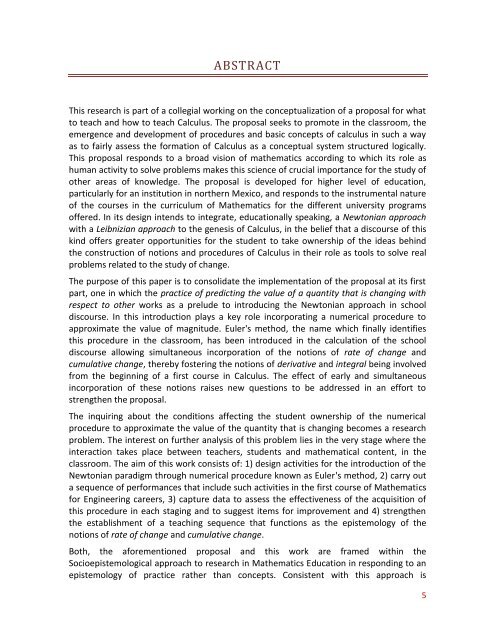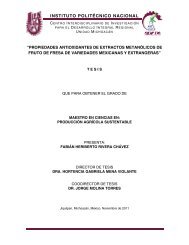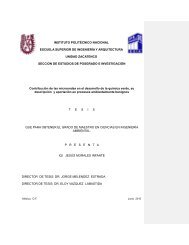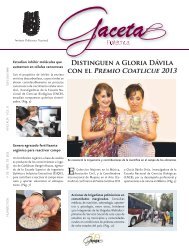Salinas, P. (2010). - Repositorio Digital - Instituto Politécnico Nacional
Salinas, P. (2010). - Repositorio Digital - Instituto Politécnico Nacional
Salinas, P. (2010). - Repositorio Digital - Instituto Politécnico Nacional
You also want an ePaper? Increase the reach of your titles
YUMPU automatically turns print PDFs into web optimized ePapers that Google loves.
ABSTRACT<br />
This research is part of a collegial working on the conceptualization of a proposal for what<br />
to teach and how to teach Calculus. The proposal seeks to promote in the classroom, the<br />
emergence and development of procedures and basic concepts of calculus in such a way<br />
as to fairly assess the formation of Calculus as a conceptual system structured logically.<br />
This proposal responds to a broad vision of mathematics according to which its role as<br />
human activity to solve problems makes this science of crucial importance for the study of<br />
other areas of knowledge. The proposal is developed for higher level of education,<br />
particularly for an institution in northern Mexico, and responds to the instrumental nature<br />
of the courses in the curriculum of Mathematics for the different university programs<br />
offered. In its design intends to integrate, educationally speaking, a Newtonian approach<br />
with a Leibnizian approach to the genesis of Calculus, in the belief that a discourse of this<br />
kind offers greater opportunities for the student to take ownership of the ideas behind<br />
the construction of notions and procedures of Calculus in their role as tools to solve real<br />
problems related to the study of change.<br />
The purpose of this paper is to consolidate the implementation of the proposal at its first<br />
part, one in which the practice of predicting the value of a quantity that is changing with<br />
respect to other works as a prelude to introducing the Newtonian approach in school<br />
discourse. In this introduction plays a key role incorporating a numerical procedure to<br />
approximate the value of magnitude. Euler's method, the name which finally identifies<br />
this procedure in the classroom, has been introduced in the calculation of the school<br />
discourse allowing simultaneous incorporation of the notions of rate of change and<br />
cumulative change, thereby fostering the notions of derivative and integral being involved<br />
from the beginning of a first course in Calculus. The effect of early and simultaneous<br />
incorporation of these notions raises new questions to be addressed in an effort to<br />
strengthen the proposal.<br />
The inquiring about the conditions affecting the student ownership of the numerical<br />
procedure to approximate the value of the quantity that is changing becomes a research<br />
problem. The interest on further analysis of this problem lies in the very stage where the<br />
interaction takes place between teachers, students and mathematical content, in the<br />
classroom. The aim of this work consists of: 1) design activities for the introduction of the<br />
Newtonian paradigm through numerical procedure known as Euler's method, 2) carry out<br />
a sequence of performances that include such activities in the first course of Mathematics<br />
for Engineering careers, 3) capture data to assess the effectiveness of the acquisition of<br />
this procedure in each staging and to suggest items for improvement and 4) strengthen<br />
the establishment of a teaching sequence that functions as the epistemology of the<br />
notions of rate of change and cumulative change.<br />
Both, the aforementioned proposal and this work are framed within the<br />
Socioepistemological approach to research in Mathematics Education in responding to an<br />
epistemology of practice rather than concepts. Consistent with this approach is<br />
5
















